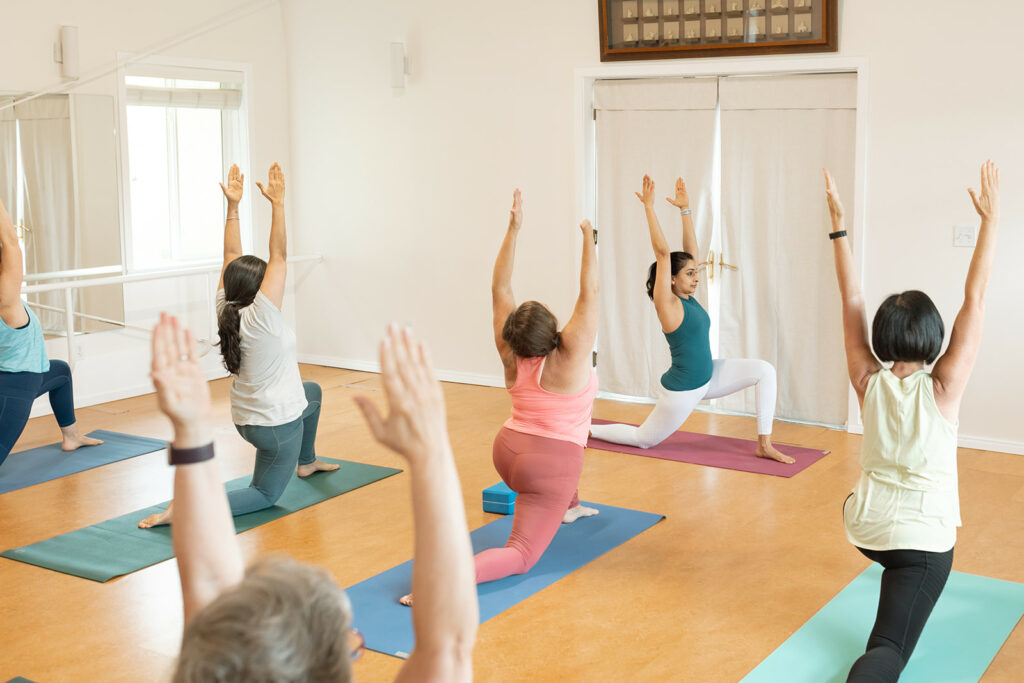Yoga sequencing is more than just arranging poses. It’s an essential skill that transforms how you lead classes and impact your students. In this blog, we’ll break down what sequencing means, why it’s vital, and the different types of sequencing that every yoga teacher should know.
What Is Yoga Sequencing?
Yoga sequencing refers to organizing asanas (yoga poses) in a logical, progressive order to deepen the physical practice and cultivate inner awareness. Think of sequencing as creating a roadmap: each pose builds upon the last, guiding students toward a more fulfilling practice.
A well-structured sequence should make students feel:
- Stronger and more open in their bodies
- Capable of breathing more freely
- Grounded, clear, and calm—even if only for a fleeting moment
Why Is Yoga Sequencing Important for Yoga Teachers?
In modern yoga teaching, there’s a significant emphasis on sequencing—and for good reason. Effective sequencing helps:
- Enhance your teaching skills: It improves your ability to create engaging, impactful classes.
- Promote student growth: Well-planned sequences support students in exploring their capabilities while feeling safe and supported.
However, yoga teaching is more than just asana sequencing. When you see sequencing as a component of class planning, you avoid being trapped in simply crafting poses. This perspective shift helps teachers move beyond just the physical aspect of yoga.
Tips for New and Experienced Teachers
Yoga Teaching Tips For New Teachers
If you’re just starting, focus on a few reliable sequences and teach them consistently for several months. This repetition allows you to refine other teaching skills, such as:
- Class organization
- Student interaction
- Effective communication
- Adaptability and cueing
Yoga Sequencing For Experienced Teachers
If you’ve been teaching for a while, challenge yourself to explore new sequencing strategies and deepen your understanding of how to adapt your classes for diverse student needs.

Main Types of Yoga Sequencing
1. Peak Pose Yoga Sequencing
Peak pose sequencing involves building an entire class around a specific, often challenging, asana. This type of sequence guides students through preparatory poses that help them achieve the peak pose.
Examples of peak poses:
- Standing: Bird of Paradise, Dancer’s Pose (Natarajasana), Twisted Half Moon
- Seated: Compass Pose (Surya Yantrasana), Firefly Pose (Bhujapidasana), Upward Plank Pose (Purvottanasana)
- Supine: Wheel Pose (Urdhva Dhanurasana), Shoulder Stand, Plow Pose (Halasana)
Pros:
- Encourages growth and mastery in students
- Builds curiosity and engagement
Cons:
- May be too challenging for some students, leading to frustration or discouragement
- Can create the impression that advanced poses are necessary for a meaningful yoga practice
Tip: Always offer modifications and adaptations to make peak poses accessible to all students. Your teaching should reflect the balance between challenge and support.
2. Themed Yoga Sequencing
Themed sequences integrate a central focus or intention throughout the class. These themes can vary from physical goals (e.g., Yoga for a Healthy Spine) to mental and emotional themes (e.g., Grounding and Focus).
Examples of yoga themes:
- For the Body: Yoga for Posture Enhancement, Yoga for Joint Mobility
- For the Mind: From Anxious to Anchored, Brain Reboot with Inversions
- For Living Yoga: The Art of Presence, Playful Exploration (e.g., childlike movements in sun salutations)
Pros:
- Adds depth and context to asana practice
- Keeps classes engaging for both the teacher and students
Cons:
- Can become too abstract or overly complex if not carefully managed
Tip: If you’re new to themed sequences, start with body-focused themes before introducing more philosophical or mindfulness-based themes.
3. General Yoga Sequencing
General sequences offer a balanced class that incorporates a variety of asanas. These sequences are great for beginner classes and morning sessions, providing a well-rounded approach that includes different categories of poses.
Benefits:
- Ensures students experience a complete practice
- Suitable for any day and any level
Tip: Incorporate the six fundamental movements of the spine (forward bend, backbend, lateral bend, twist, extension, and rotation) for a comprehensive practice.
Conclusion: Integrating Sequencing Into Your Classes
No matter your level of teaching experience, balancing different types of sequencing can keep your classes fresh and engaging. Experiment with peak pose and themed sequences, or stick to a general sequence when you want to offer a balanced, all-levels class.
Want to dive deeper? Sign up for my free sequencing masterclass and enhance your teaching skills. This session is packed with insights and actionable tips to enrich your sequencing knowledge. Register now—it’s best to attend live, but a recording will be sent if you can’t make it.

1 comment
Hi, thank you for the fantastic work you do. I just discovered you and I’m in love. Just last week, I was looking for an effective strategy for sequencing, and unfortunately, I didn’t find your blog in time and don’t have access to your masterclass on the topic. I hope to join the next one, and if I could watch the recording of the last one, it would be a fantastic Christmas gift. Thank you again.
Comments are closed.